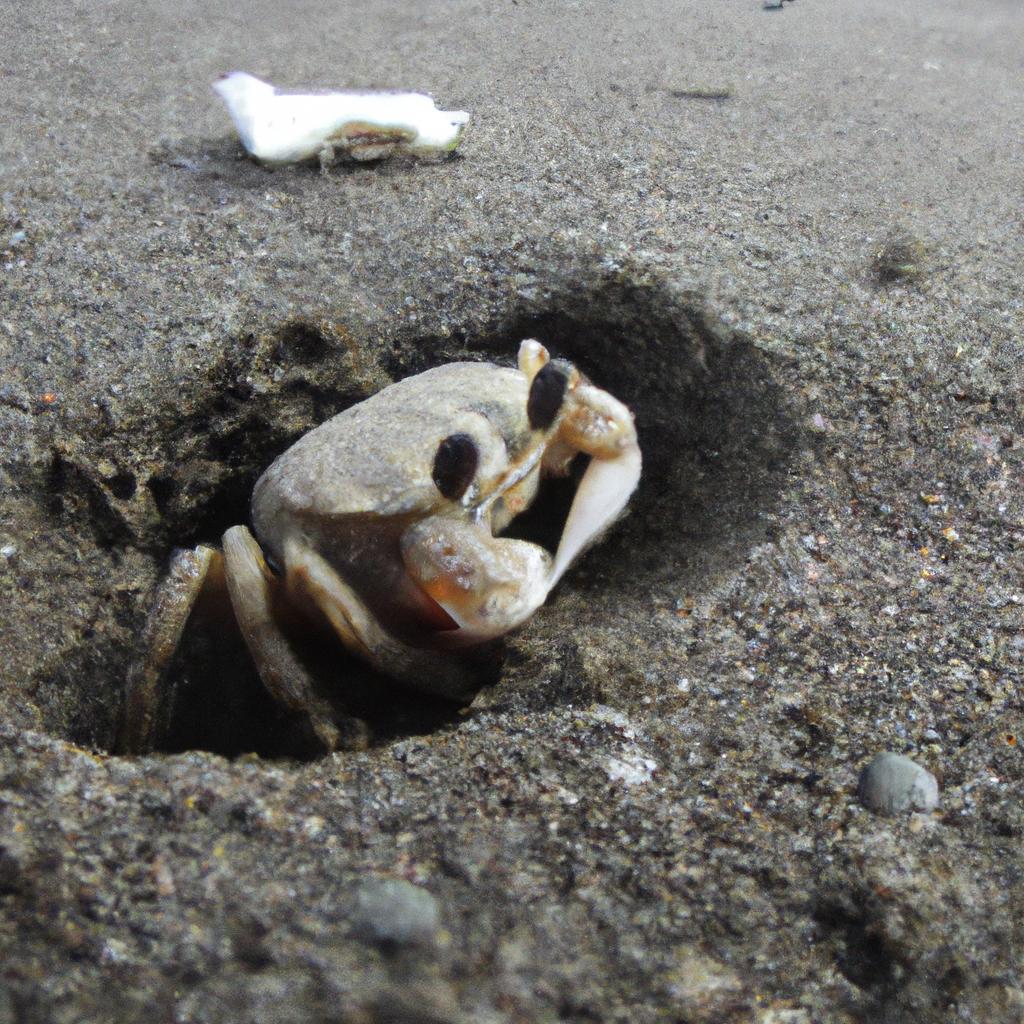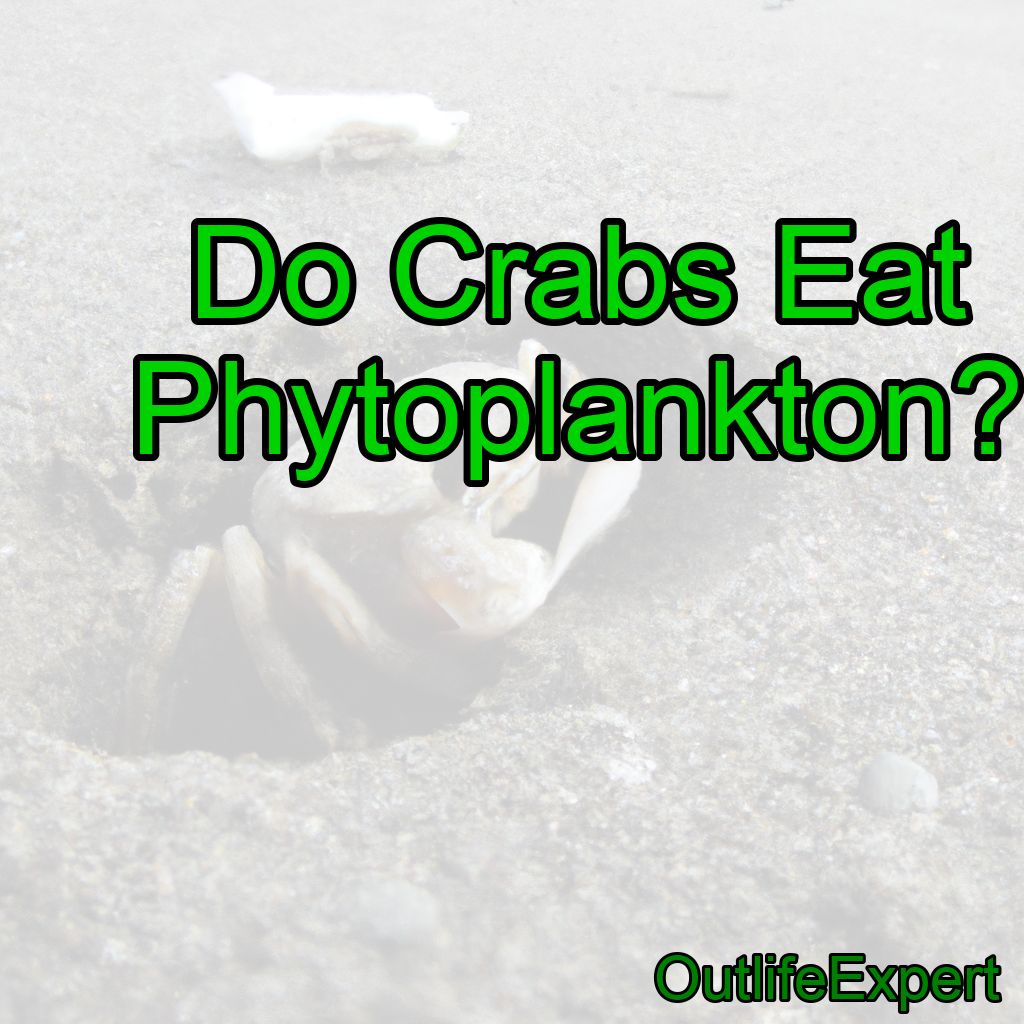Growing up on the coast, I spent many summers exploring tide pools and observing the fascinating marine life that called them home.
I was particularly drawn to crabs, with their interesting exoskeletons and unique movements.
Naturally, I became curious about their eating habits—especially whether or not they eat phytoplankton.
So, I embarked on a quest to find out.
The answer is no, crabs do not eat phytoplankton.Crabs are primarily omnivorous scavengers, feeding on various types of organic matter. However, they do not typically feed on phytoplankton. To understand the reasoning behind this, let’s dive into the world of crabs and phytoplankton.
Contents
What Are Phytoplankton?
Phytoplankton are microscopic, plant-like organisms that float near the surface of the ocean.
They are a crucial part of the marine food chain, as they are the primary producers of organic matter, which fuels the entire marine ecosystem.
Phytoplankton are eaten by a variety of marine animals, such as zooplankton, fish larvae, and filter feeders like bivalves and some types of whales.
Crabs’ Preferred Diet
Despite being omnivorous, crabs have specific dietary preferences. In general, crabs eat both plants and animals, but they typically prefer to scavenge for dead organisms, algae, and detritus (decaying organic matter).
This makes them essential for maintaining clean and healthy ecosystems by breaking down and recycling nutrients.
Algae
Crabs, like the green shore crab, have been known to consume various types of algae, including green, red, and brown varieties.
In fact, some crabs have been observed scraping algae off rocks with their claws.

Fish and Invertebrates
Crabs are also predators and will hunt for fish and other invertebrates such as mollusks, worms, and even other crabs.
Their powerful claws allow them to crush shells and capture their prey with ease.
Detritus and Dead Organisms
One of the most significant components of a crab’s diet is detritus, which is decaying organic matter.
This can include dead animals, plants, and other organic material.
Crabs are often found feeding on the remains of dead fish and other marine life that have washed up on shore.
How Crabs Eat
Crabs have a unique way of eating, using their powerful claws and specialized mouthparts to consume their food.
They have two main types of claws: a larger, more powerful claw used for crushing and a smaller, more precise claw used for tearing and manipulating food.
Together, these claws allow crabs to break apart and consume a variety of food sources.
Mandibles
Inside their mouths, crabs have mandibles that act like teeth to grind and tear food into smaller pieces.
These mandibles also help to move food towards the crab’s mouth.
Maxillipeds
Alongside their mandibles, crabs have specialized appendages called maxillipeds that help to manipulate and hold food while they eat.
These appendages act like “tweezers” to pick up and move food towards the crab’s mouth.
Why Crabs Don’t Eat Phytoplankton
The main reason crabs don’t eat phytoplankton is that their feeding habits and mouth structures are not suited for consuming microscopic organisms. Crabs are bottom-dwelling creatures that mainly scavenge for food on the seafloor, while phytoplankton float near the ocean’s surface.
Additionally, crabs are not filter feeders and lack the necessary adaptations to filter out and consume tiny particles like phytoplankton.
The Role of Phytoplankton in Crabs’ Ecosystem
While crabs don’t directly consume phytoplankton, these microscopic organisms still play a critical role in the crab’s ecosystem.
As primary producers, phytoplankton contribute to the marine food chain by providing energy and nutrients for zooplankton and other organisms that crabs do eat.
In this way, phytoplankton indirectly support the crab’s diet and contribute to their survival.
Conclusion
In conclusion,crabs do not eat phytoplankton. They are omnivorous scavengers that primarily feed on algae, fish, invertebrates, and detritus.
While crabs don’t consume phytoplankton directly, these microscopic organisms are still vital to the health of the marine ecosystem that crabs inhabit. So, while my summers spent watching crabs scuttle around tide pools didn’t reveal any phytoplankton consumption, I now understand the complex and interconnected marine environment that crabs call home.
FAQs
Can crabs see plankton?
Crabs have eyes that are sensitive to light and motion, but it is unlikely that they can see individual plankton due to their small size and distance from the crab’s eyes.
Can crabs see what they eat?
Yes, crabs have eyes and are able to see what they eat.
Can crabs see their food?
Yes, crabs have compound eyes that allow them to see their food.
Do crabs eat planktonic algae?
Yes, some species of crabs do eat planktonic algae as part of their diet.
Can crabs see the plankton that they eat?
Yes, crabs have excellent eyesight and can see the plankton that they eat.
Do crabs eat ocean plants?
Yes, crabs are known to eat ocean plants such as seaweed and algae. However, their diet can also include other animals such as small fish and mollusks.




